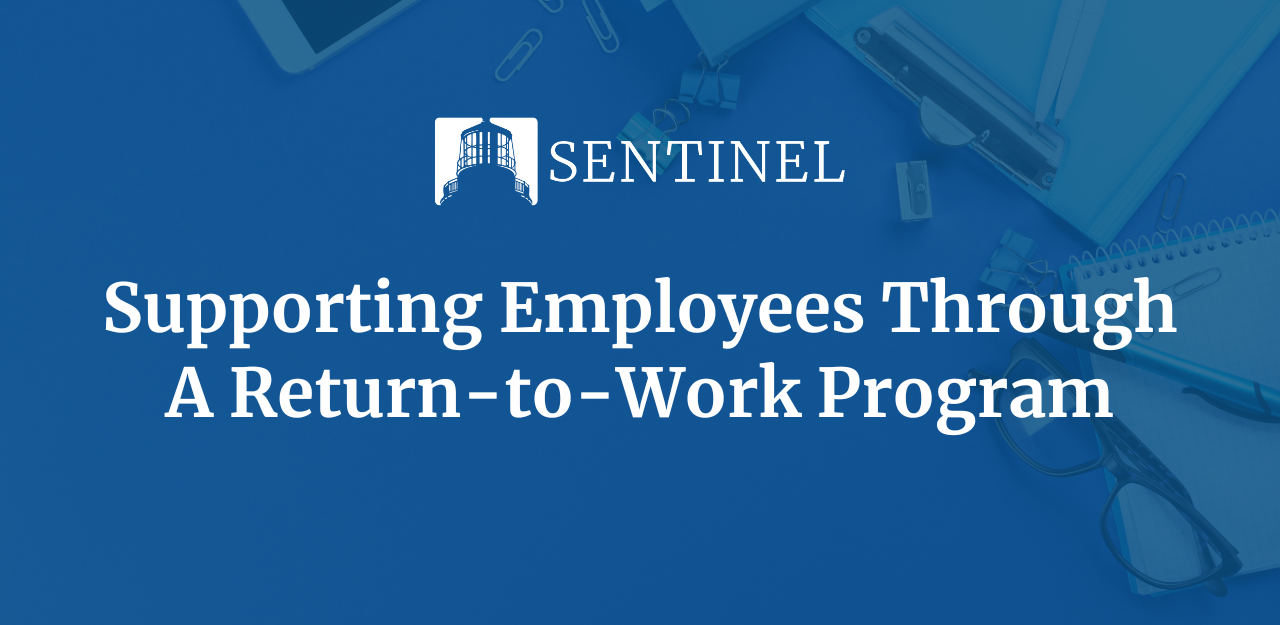The National Safety Council states that every seven seconds a worker is injured on the job. The loss of a single worker can lead to productivity lags and morale changes in the workplace. As an employer, your priority is to ensure your injured worker receives proper medical attention, yet it is also important to aid in their recovery and return to their job duties.
What Is A Return-To-Work Program
A Return-to-Work (RTW) program provides structured support for an injured employee’s transition back to normal or modified schedule following a workplace illness or injury. The primary goal of RTW is to assist employees in resuming pre-injury responsibilities safely and quickly, but also provides a framework for managers and supervisors.
How To Develop and Implement a Return-to-Work Program
After an employee is injured on the job, the treating medical professional determines if they can return to work at either a full duty or modified/light duty level. If the employee is cleared to return to work at a modified duty level, their normal duties will include restrictions of some kind. For instance, the injured worker may be unable to stand for periods of longer than two hours, so modified-duty would include scheduled short rest breaks where the employee can sit a few times throughout the day.
Employers should develop a written RTW policy that states that employees released to light or modified duty will have roles and duties available. This policy should be adhered to in all instances and distributed to all employees. Usually there is a RTW champion, the Safety Director, Human Resources Manager, or even a designated RTW Coordinator in some instances. This person serves as the point of contact for both the injured worker and management, with respect to modified duty work and restrictions.
The treating physician will often request a detailed description of duties regularly performed by the employee pre-injury. It is important to provide as much information as possible regarding the tasks and responsibilities performed. Often, the physician can find several duties from their current role to include as modified duty.
It is encouraged that you find duties within the restrictions. The light duty job does not have to be in their normal department, it just needs to be within the physicians’ guidelines. Having a list of light duty tasks in advance will help implement the process. Be creative in your approach for light duty. This may be an excellent chance to assign otherwise neglected tasks around the workplace.
Return-to-Work Program Benefits
Effective RTW helps the injured worker remain productive and focused on what they can do rather than what they cannot do. Keeping someone active is important in the healing process, both mentally and physically. RTW can provide an injured worker with clear direction and aid in their recovery. The injured worker remains connected to fellow employees and the employer and keeps their skills sharp.
There are several other benefits of effective RTW Programs as well:
- Decreased Claim Costs: The longer an injured employee is away from work, the more expensive the claim is. Effective RTW programs reduce the financial burden of workplace incidents for the employer by reducing lost time benefits. This further can lower the organization’s experience modification factors.
- Morale and Productivity: Offering a customized light duty role shows employers care and are committed to their recovery. It provides a sense of job security and shows that they are valued. Further, you will not have to recruit replacement employees.
- Wage Continuation: Instead of a 66 2/3 payout, the injured worker receives 100% of their wages so they are not worried about their finances. They can stay focused on healing faster.
Safeguarding Your Success
It is important to have a RTW policy and procedure in place before you have an incident. Discuss the policy and the implementation with all employees and make it known that all of management supports the program. Setting clear expectations is an essential element of a successful RTW program. Contact Sentinel today to learn more about how our Sentinel Risk Performance Group is dedicated to Safeguarding Your Success.

